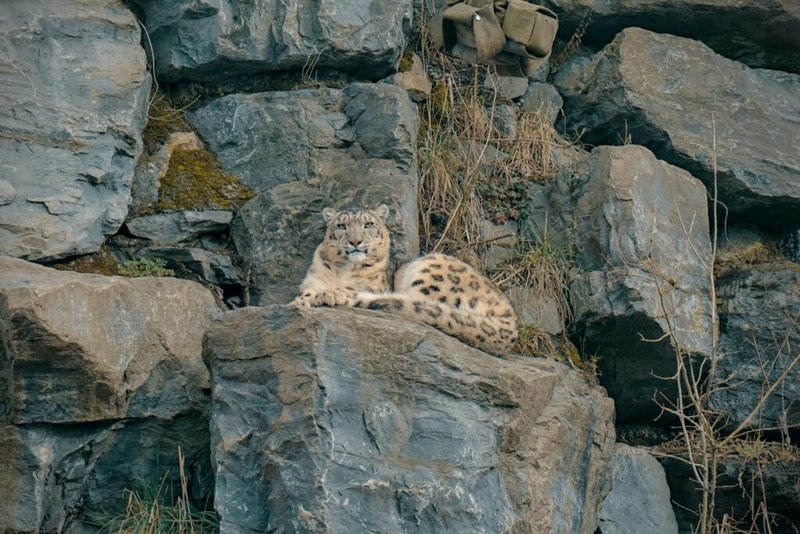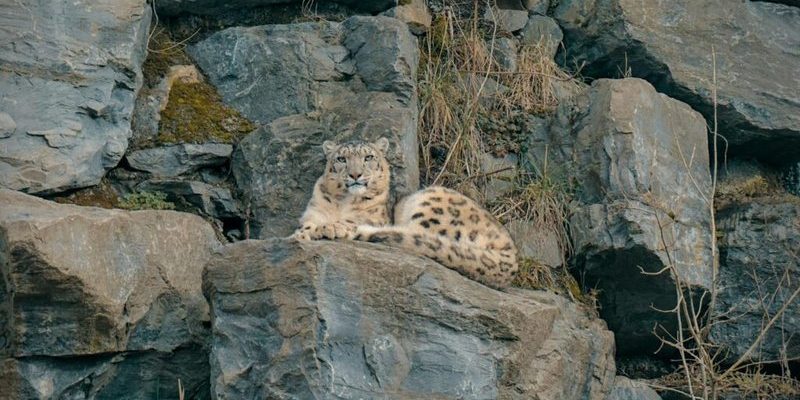
Snow leopards are the ultimate survivalists. Their thick, luxurious fur and powerful adaptations make them well-suited for their harsh environments. Think of them like nature’s ninjas—stealthy, adaptable, and incredibly resilient. Let’s dive into the amazing ways snow leopards make their home in the high-altitude regions of the Himalayas and beyond.
Physical Adaptations for Cold Climates
Snow leopards have some pretty incredible physical traits that help them thrive in frigid temperatures. First off, their thick fur isn’t just for show. It’s not only soft and gorgeous, but it also provides insulation, protecting them from the biting cold. The fur covers not only their bodies but even their paws. That’s right—those furry feet act like built-in snowshoes, allowing them to walk on snow without sinking.
Another key factor is their unique body structure. Snow leopards have stocky builds and shorter limbs compared to other big cats. This compact shape helps them conserve body heat, which is vital when temperatures drop. They also have larger nasal passages that help warm the cold air they breathe. Honestly, it’s like they were designed specifically for life in the mountains!
Their long, bushy tails aren’t just for balance; they also serve a practical purpose. Snow leopards wrap their tails around their bodies for extra warmth during frigid nights. It’s kind of like having a personal blanket with them wherever they roam.
Mastering the Art of Camouflage
You might be surprised to learn that survival in the wild isn’t just about physical capability; it’s also about being sneaky. Snow leopards excel in camouflage. Their fur is a beautiful blend of gray, white, and black spots, allowing them to blend perfectly into the rocky terrain and snow. This natural disguise is key when they’re hunting for food—all part of their “stealth ninja” routine.
When stalking prey, snow leopards are incredibly patient. They can lie in wait for hours, using their camouflage to get as close as possible to unsuspecting animals like ibex and bharal. With their keen eyesight, they can spot movement from great distances, making them effective hunters even in harsh conditions.
Here’s the thing: their ability to blend into their environment is crucial for their survival. It ensures they don’t just go hungry but can also avoid potential threats. In a world where every step could be the difference between life and death, stealth is a game-changer.
Hunting Techniques and Diet
When it comes to food, snow leopards are opportunistic hunters. They primarily prey on animals like ibex, bharal, and sometimes even smaller mammals like hares. In the high mountains, food can be scarce, so they’ve adapted some interesting strategies for catching their meals. They often hunt during dawn and dusk when their prey is most active.
Snow leopards can leap up to six times their body length! Imagine being able to jump over a car in one bound. This incredible strength and agility allow them to navigate steep cliffs and rocky terrains with ease. When they spot prey, they’ll use a combination of stealth and speed. After sneaking close, they make a powerful leap to surprise their target.
While they are skilled hunters, snow leopards won’t always catch something on the first try. They must rely on their instincts and patience, often stalking their prey for long stretches. If they miss, they’ll simply wait for the next opportunity to pounce. It’s a tough life, but they’re built for it!
Behavioral Adaptations to Extreme Conditions
Snow leopards are not just physically equipped for harsh climates; their behavior also plays a vital role in survival. These cats are primarily solitary creatures, which helps reduce competition for food. They maintain large home ranges—some spanning hundreds of square miles—allowing them to roam and find the best hunting grounds.
During the bitterly cold months, snow leopards are known to conserve energy by resting in sheltered spots, like caves or rocky outcrops. You might be wondering how they manage to keep warm during the frigid nights. Well, they find sheltered places that block the wind, allowing them to stay out of direct exposure to the elements.
Interestingly, snow leopards are also known for their vocalizations. They communicate with each other through a series of sounds, including growls, hisses, and even a unique call that sounds like a “sneeze.” This helps them maintain their territories and attract mates. It’s fascinating how even their social behavior is tailored for survival!
Conservation Challenges They Face
Despite their impressive adaptations, snow leopards face significant threats. One of the biggest issues is habitat loss due to human encroachment and climate change. As people expand into their territory, snow leopards lose the space they need to live and hunt. This also leads to a decline in prey, making it even harder for them to survive.
Poaching is another critical threat. Snow leopards are hunted for their beautiful fur, and their bones are sometimes used in traditional medicine. This illegal trade puts even more pressure on their already dwindling population. According to some estimates, there are only about 4,000 snow leopards left in the wild. That’s a shocking number for such magnificent creatures!
Conservation efforts are underway, aiming to protect snow leopards and their habitats. By creating protected areas and working with local communities, organizations are trying to ensure these big cats can continue to thrive in their remote homes. It’s a tough battle, but every effort counts!
The Role of Snow Leopards in Their Ecosystem
Snow leopards are an essential part of their ecosystem. As apex predators, they help maintain a healthy balance in the populations of their prey. This regulation is crucial for ensuring that the entire ecosystem stays healthy and vibrant. When snow leopards thrive, so does the environment around them.
Their presence can indicate the overall health of the mountain ecosystem. If snow leopards are doing well, it often means that other wildlife and natural resources are also in good shape. They’re like the canaries in the coal mine—if they’re facing trouble, it’s a signal for us to take action.
By protecting snow leopards, we’re not just saving a beautiful species; we’re also supporting the entire ecosystem they inhabit. It’s a reminder of how interconnected nature is and how every species plays a role.
Snow leopards are truly remarkable animals, showcasing nature’s brilliance in adapting to harsh environments. Their stunning physical traits, clever hunting techniques, and unique behaviors allow them to not only survive but thrive in icy mountains where few others can. Yet, they face significant challenges that threaten their survival.
As we learn more about these incredible creatures, it’s essential to support conservation efforts and raise awareness. After all, snow leopards are not just a part of the Himalayan landscape; they symbolize the wild beauty of nature and the importance of preserving our planet’s biodiversity.
So next time you picture a snowy mountain, think about the snow leopards that call it home. They remind us that, with resilience and adaptation, even the toughest conditions can be conquered.

